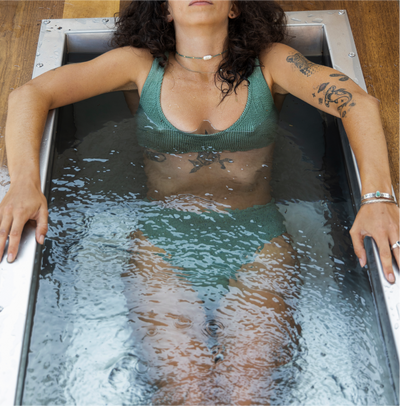What temperature and for how long should you cold plunge?
A cold plunge is when you fully submerge your body up to your neck in water below 59° Fahrenheit (15° Celsius).
59° Fahrenheit—two to four sessions per week for 11 minutes total time—is enough to cause measurable metabolic boost according to Dr. Susanna Soeberg.
You can read more about this study here:
Dr. Susanna Soeberg Cell Press Peer Reviewed Study
Her study on cold exposure therapy was performed on winter swimmers who dipped into the ocean. This study has become a reference for defining what a cold plunge is.
Another definition to consider: you ought to cold plunge at a temperature where it is uncomfortably cold yet safe. This is a great rule of thumb created by Dr. Andrew Huberman.
What temperature and how long to stay in a cold plunge is based on your unique cold tolerance.
Do not see cold exposure as a competition, but rather as a means to build insight, resilience, and adaption.
Some people naturally have high tolerances; others naturally have low tolerances.
If you are just starting out, start at a higher temperature and lower duration. Stairstep your progress. Once you understand your thresholds / limits, you can begin exploring different temperatures and times to increase your adaption during a cold plunge.
Varying temperatures and duration is incredibly useful in keeping your body always adapting.
Think of changing temperature and duration as similar to changing weights, sets, and reps while working out. The goal is to keep your body always guessing, always adapting, in order to maximize the benefits.
When Dr. Susanna Soeberg is asked what temperature and duration is best, her response is “The perfect temperature is simply to keep changing it.”
Exercise, cold exposure (cold plunge), heat exposure (sauna), and intermittent fasting are all hormetic stressors. All of these protocols provide the most benefit by changing up your routine.
Why Cold Plunge Up to the Neck?
Cold plunging up to the neck, fully submersed in water, provides
a significantly higher dose of cold exposure that cold showers.
If you have the opportunity to cold plunge, see for yourself
the difference between submerging to your chin vs. to your shoulders. In
addition, explore the difference between having your arms in the water and
outside the water.
You will notice an increase in intensity from having your
neck and arms submerged.
Furthermore, you can experiment full dunking your head
underwater at the start and at the end of your cold plunge. This leads to
further adaptation / adjustments your body goes through during cold exposure.
